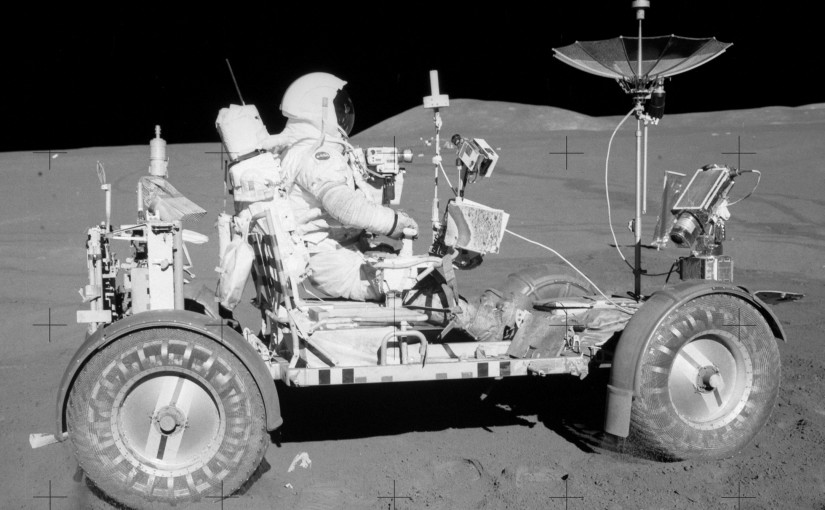250 Years of Flight
The history of flight has Benjamin Franklin watching the first men fly in a hot-air balloon. He rode in a buggy pulled by horses. Today, parked on the moon, is a moon-buggy, awaiting its next drivers. Before, there was Kitty Hawk in 1903; WWI had fighters; Sputnik – then Cosmonauts flew overhead. These triggered a race with President Kennedy promising a moon-landing. The moon was abandoned for 50 years, but, in 2021, “Captain Kirk” really went into space. We are now returning to the moon – then Mars!
It took just one human lifetime to drive a buggy on the moon instead of riding in a buggy being pulled by a horse. The moon-buggy rides took place in 1971; horse and buggy rides were the state of the art at the turn of the century.
The history of flight has Leonardo da Vinci envisioning a flying machine in 1488. Four hundred and fifteen years later, the first powered flight was made by the Wilbur Wright, at Kitty Hawk in 1903. He flew 120 feet in 20 seconds. He achieved an altitude of about six feet. It was world changing, except it was not believed by the world.
In another 12 years, aircraft were used over the front lines of World War I — first for observation, then quickly to drop bombs, and fight each other in the sky. Germany’s “Red Barron” is still remembered.
In World War II, Germany attacked English cities from the air. First, by planes, then by jet-powered bombs (the V1), then by long-range, guided ballistic missiles (the “Vengeance Rockets – V2).
After the war, the United States brought their designer and his team to America to design increasingly large rockets. These culminated in the massive Saturn V — which brought humankind to land on the moon, July 20, 1969. The last human left the moon in 1972. Humankind had not been back.
We are planning to return in the next few years.
